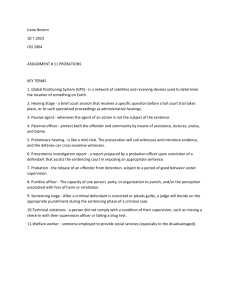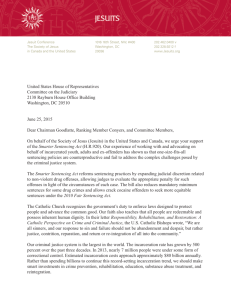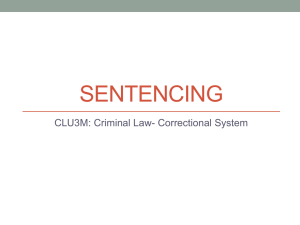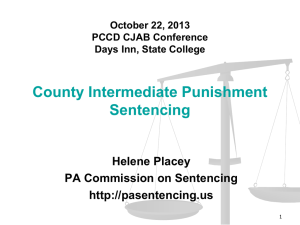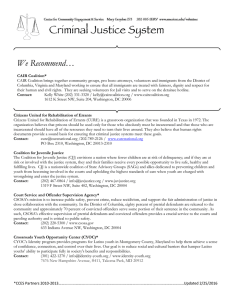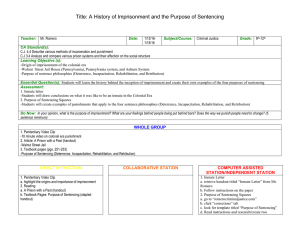ABSTRACT OF THE DISSERTATION
advertisement
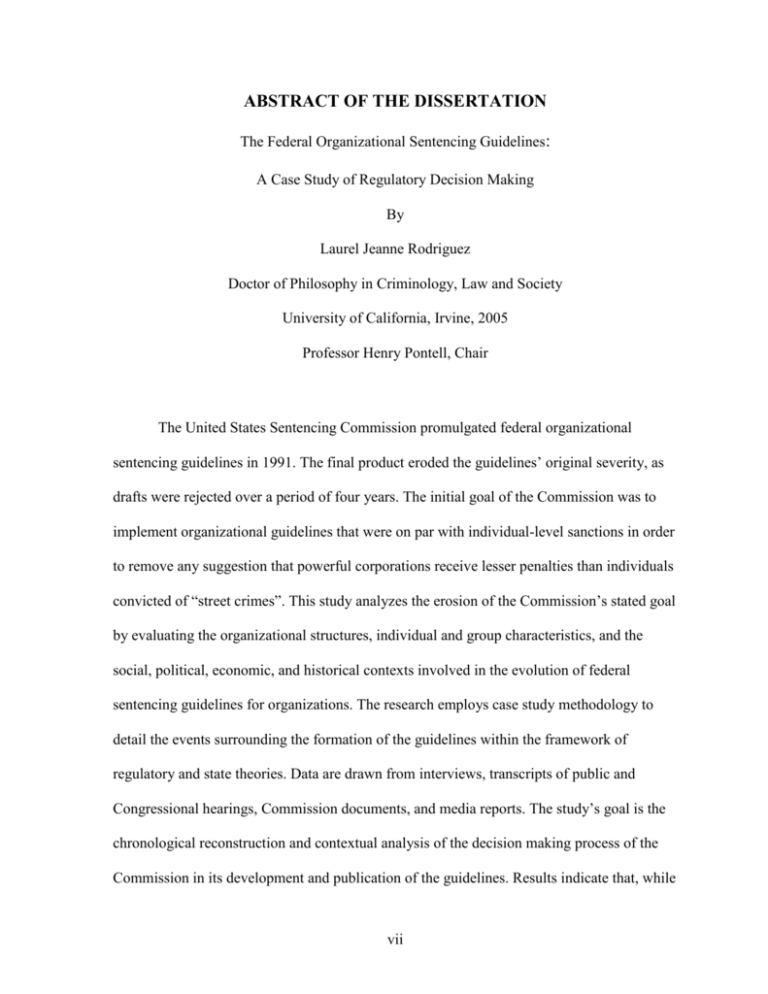
ABSTRACT OF THE DISSERTATION The Federal Organizational Sentencing Guidelines: A Case Study of Regulatory Decision Making By Laurel Jeanne Rodriguez Doctor of Philosophy in Criminology, Law and Society University of California, Irvine, 2005 Professor Henry Pontell, Chair The United States Sentencing Commission promulgated federal organizational sentencing guidelines in 1991. The final product eroded the guidelines’ original severity, as drafts were rejected over a period of four years. The initial goal of the Commission was to implement organizational guidelines that were on par with individual-level sanctions in order to remove any suggestion that powerful corporations receive lesser penalties than individuals convicted of “street crimes”. This study analyzes the erosion of the Commission’s stated goal by evaluating the organizational structures, individual and group characteristics, and the social, political, economic, and historical contexts involved in the evolution of federal sentencing guidelines for organizations. The research employs case study methodology to detail the events surrounding the formation of the guidelines within the framework of regulatory and state theories. Data are drawn from interviews, transcripts of public and Congressional hearings, Commission documents, and media reports. The study’s goal is the chronological reconstruction and contextual analysis of the decision making process of the Commission in its development and publication of the guidelines. Results indicate that, while vii structural-level variables played a large part in explaining the development of the guidelines, a more accurate and complete understanding of this process is possible by including an analysis of the individual-level characteristics of Commissioners, including their professional backgrounds, ideological perspectives, styles of leadership, and future goals. In addressing the issue of public policy formation, this research can inform and expand knowledge of the complex dynamics of law creation by examining the micro-macro link incorporated in the decision making process. viii

